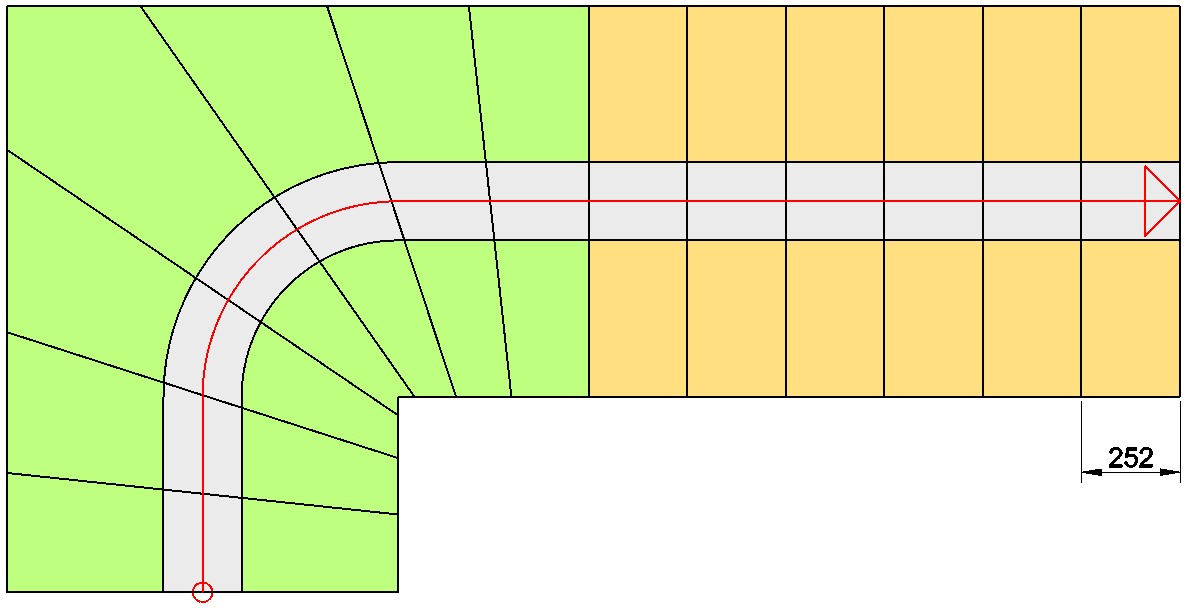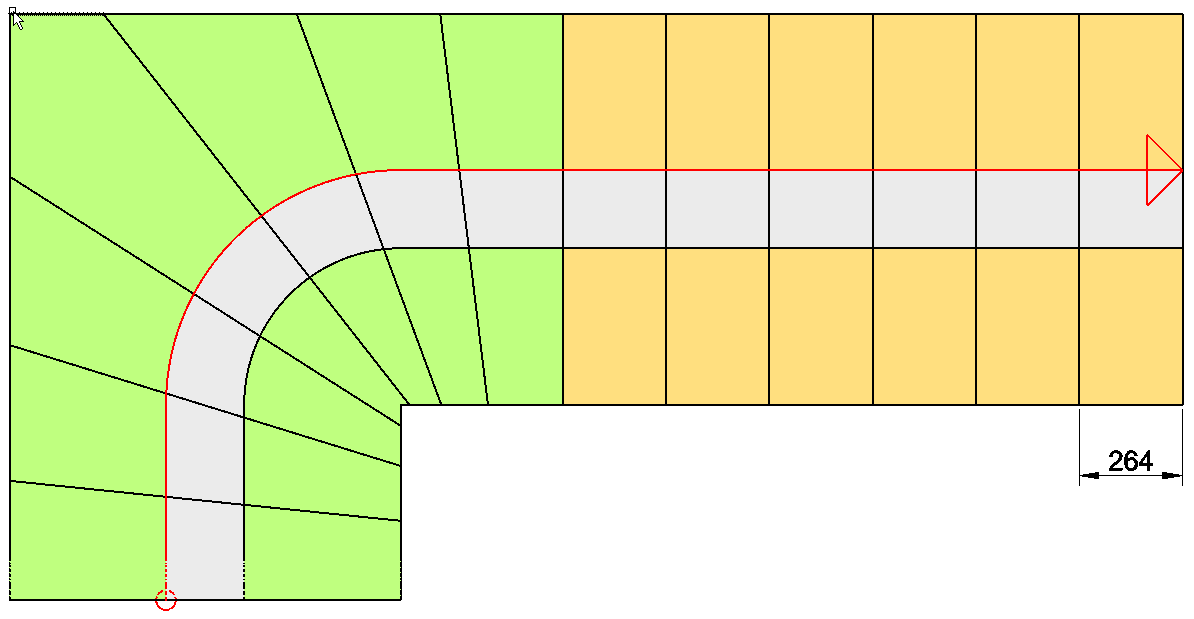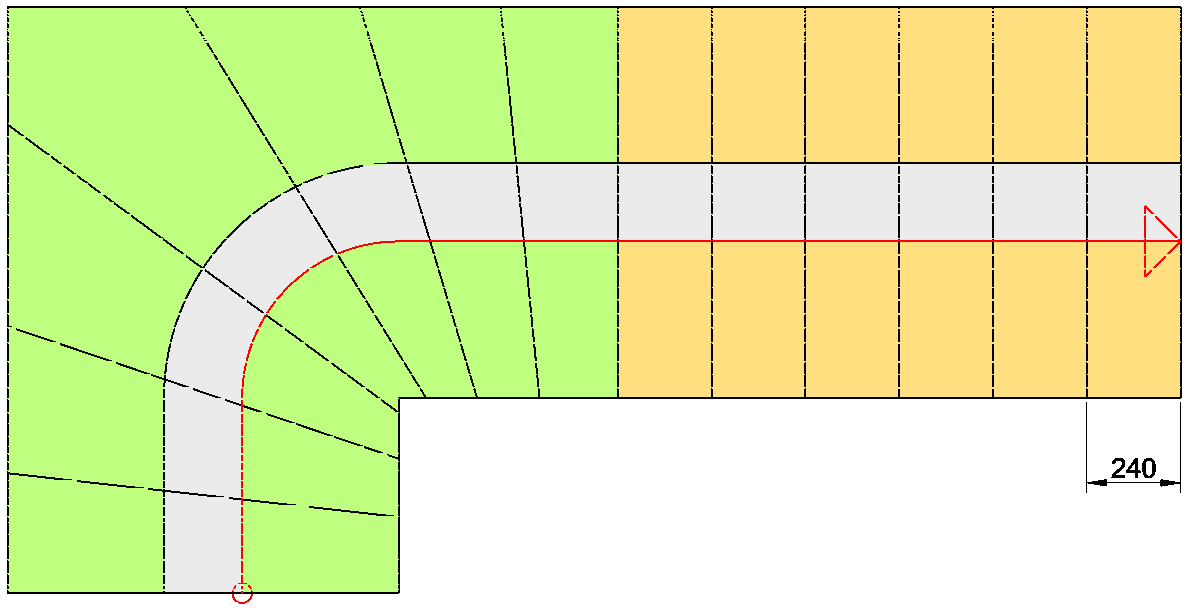
The walking line determines how treads are measured and influences the entire stair geometry — especially on winder stairs.
See how fast it worksThe walking line is an imaginary line along which the individual treads of a staircase are measured or set out.
Within the walking area, the walking line on winder stairs may be positioned freely, but it must have no kinks, and its radius must be at least the smallest radius of the corresponding walking area.
On straight-run stairs, the position of the walking line has not traditionally been relevant. However, the new edition of DIN 18065 includes provisions for landings that require defining a walking line.
In practice, the exact position of a handrail may only be known after the staircase has been completed. Strictly speaking, this is needed earlier to define the walking line and to plan the winder geometry.
As a rule, the walking line lies in the middle of the walking area — and that is where it belongs.

If the walking line is shifted to the outer boundary of the walking area, it attains its maximum length. As a result, the calculated tread depth increases.
However, if people still walk near the center (the walking line is not marked on the real stair), the following problem arises: the straight treads have a larger going, the overall stair footprint remains the same, so the treads around the winder area become shorter near the middle of the walking area. And that is exactly where the risk of tripping is higher.
This approach can be used to “beautify” the calculation for tight layouts in order to meet the standard — but it is not ideal for safety.

Here the reverse applies: the overall tread depth becomes smaller. If people again walk near the center of the walking area, the treads in the winder region appear larger than in the straight section.
